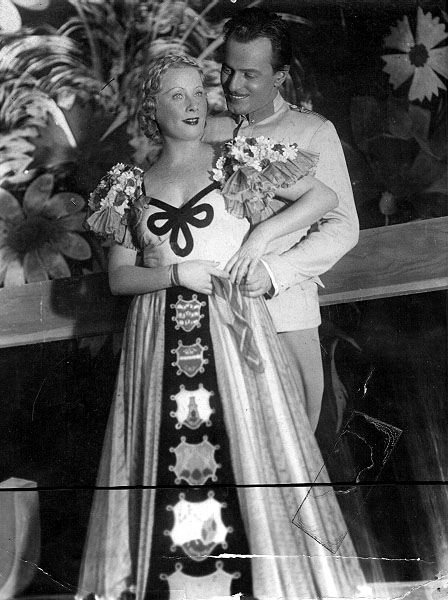Have you ever heard about the first Hungarian filmstar, the male idol of his age, Pál Jávor?

Pál Jávor (31 January 1902 – 14 August 1959) was a Hungarian actor and the country’s first male movie star who is still one of the most influential actors of Hungarian film and a widely recognised character of his era. Generations of Hungarian men wanted to be like him while hundreds of thousands of women wanted to become his wife.
He was born in Arad as Pál Jermann to the family of a 53-year-old cashier, Jermann Pál and Katalin Spannenberg, a 17-year-old servant-maiden. They were poor and moved often, and he always wanted to break away from his homeland, and from the simple life, his mother wished for him. In WWI, he served on the front as a courier, but military police caught him and transported him home.
In 1918, he decided to emigrate to Denmark to act in the Danish movies he idolised then because he did not want to remain in Romania (the entente gave Eastern Hungary, including Arad, to Romania). He could get to Budapest for free, but he did not have enough money to continue his journey, so he went to study in the Academy of Drama in the Hungarian capital.
He lived in great poverty,
but, in 1922, he earned his degree in the Actor’s Guild school. He acted in theatres in Budapest, Szeged and Székesfehérvár, but his dissolute lifestyle made him hard to work with. He married Olga Landesmann, the daughter of a Jewish magnate, in 1934. He was the actor of the Vígszínház between 1930–35, and the National Theatre between 1935-44.
The first opportunity to appear in a movie came in 1929 when he starred in Csak egy kislány van a világon, the last Hungarian silent film.
Interestingly, this was also the first Hungarian film to feature voice, as technicians got hold of the technology during the last days of the shooting. This allowed Jávor to sing a song in one of the scenes, which, combined with the charm and temperament that became his later trademark, secured him firm employment in the country’s waking film industry.
As a result, he got the lead role in the first Hungarian movie with sound, Kék Bálvány, and a smaller one in the second, Hyppolit, a lakáj, a comedy that became the first real hit among the public. Fame and popular roles came one after the other, which was hard to bear. Before his marriage, he turned to alcohol, but Olga Landesmann, a Jewish widow, and her two children managed to
offer him a welcoming home and family that helped.
Since he could hardly bear the defaming of his fellow actors during WWII and outspoke against the growing Nazi influence, he became a target of the Gestapo. After the Nazi occupation of Hungary, authorities imprisoned him and transported him to Germany where the Allied forces liberated him.
The new Communist government of Hungary did not want him either, so he travelled to the United States where the emigrant community welcomed him with great happiness. However, he could only arrange small comic and musical shows, which he found humiliating. He tried himself in Hollywood, as well, but he did not know English well, so his best known Hollywood role is probably the small part of opera baritone Antonio Scotti in the hit film The Great Caruso (1951), starring Mario Lanza.
- Explore the world of cinema in Hungary’s Hollywood
- Coronavirus – Hungary exempts Hollywood crew and cast from EU ban
- Hungarian poets who look just like Hollywood’s biggest stars
He worked as a gatekeeper and computer operator during the 11 years he spent in the USA. Even though he met many difficulties there, he had some joyful moments, as well. For example, he wrote numerous articles in American-Hungarian papers, and with his journalist ID, he could visit movie theatres for free. Furthermore, he befriended several Hungarian artists living in the United States, including Sándor Márai.
He went home to Hungary in 1957 where people welcomed him as a
living legend.
He had several successful appearances and even a movie deal. But his health could not tolerate the high intensity of his life. He died in a Budapest hospital after a seizure in 1959.
Interestingly, his burial was a theatrical ceremony, and tens of thousands of mourning fans followed his coffin in the Farkasréti Cemetery.


